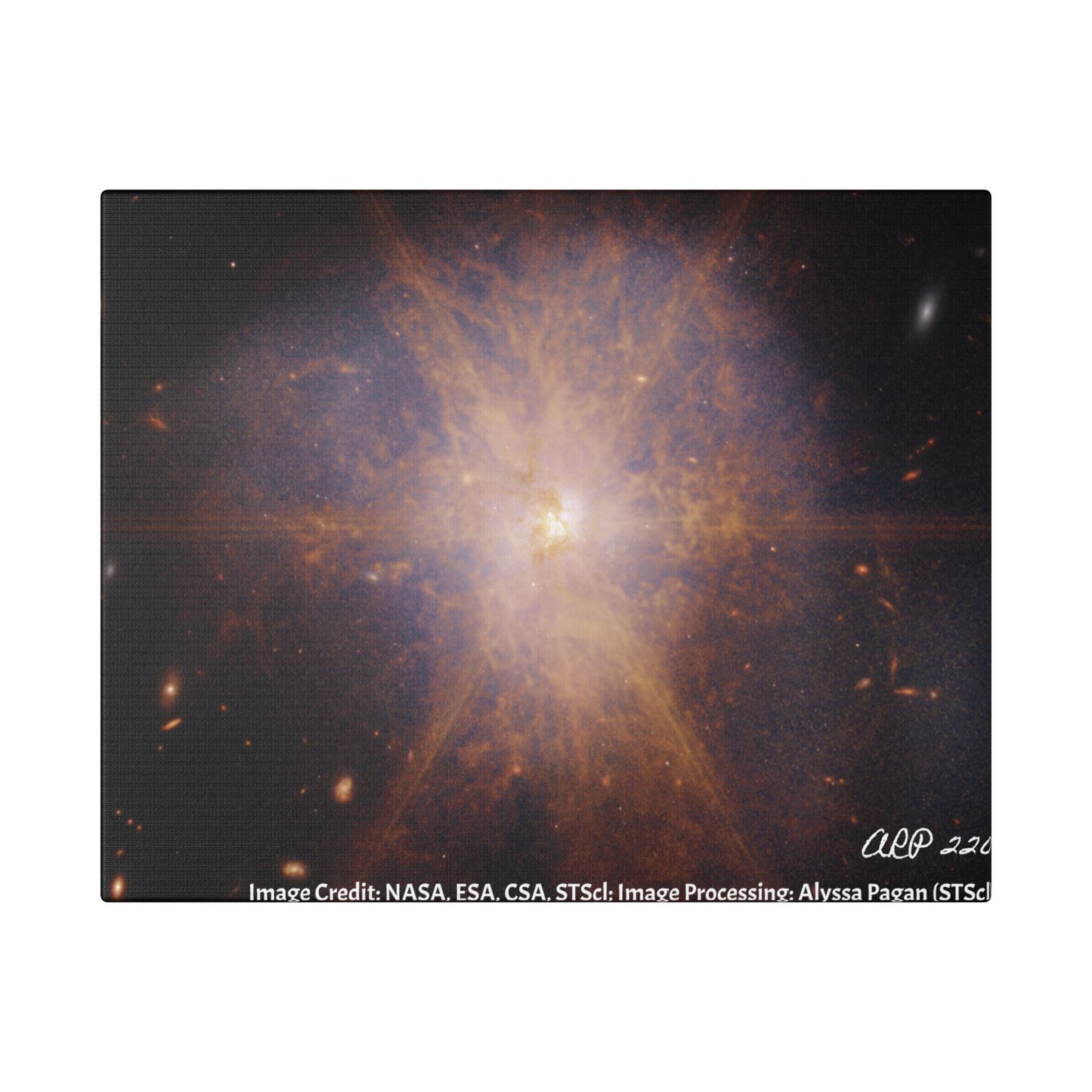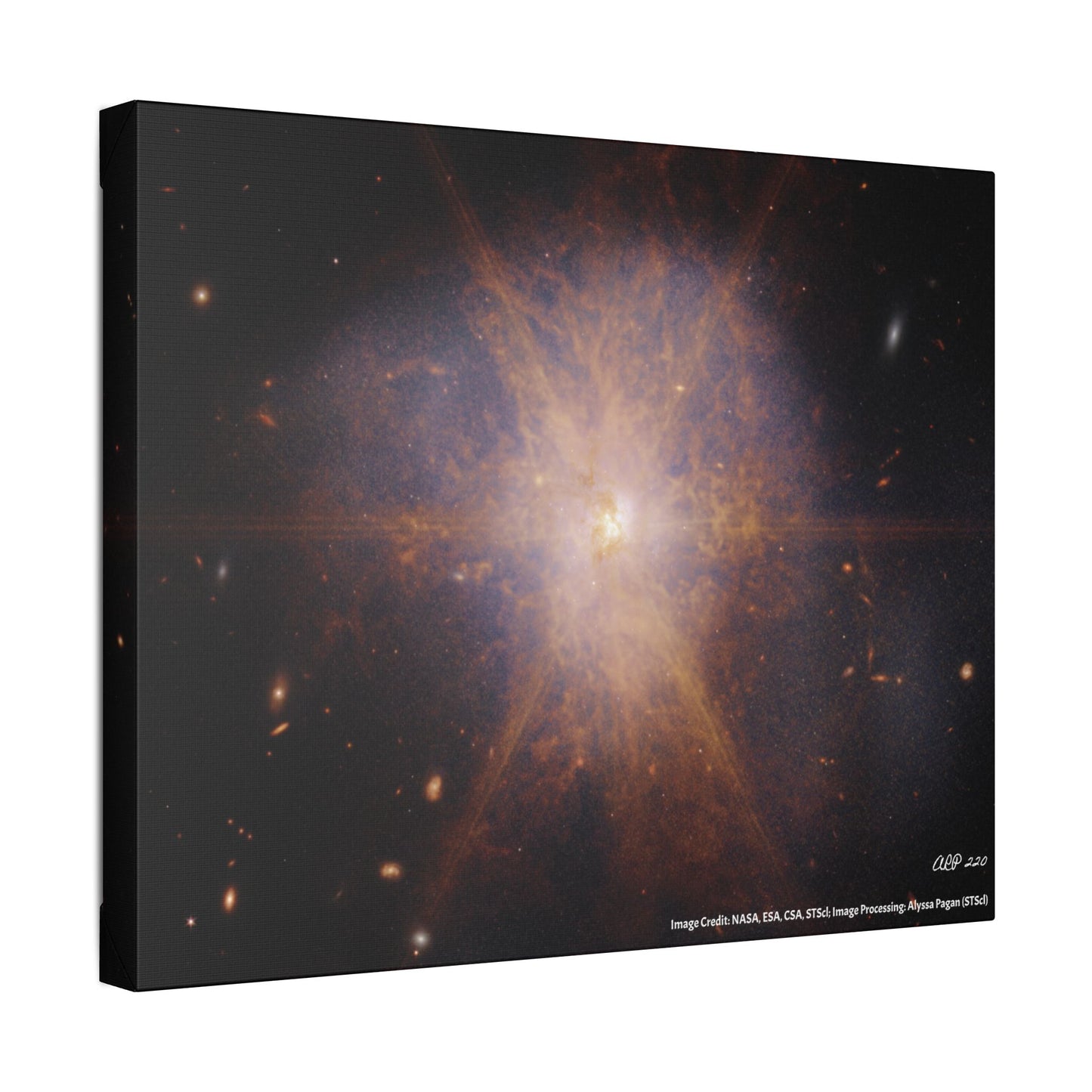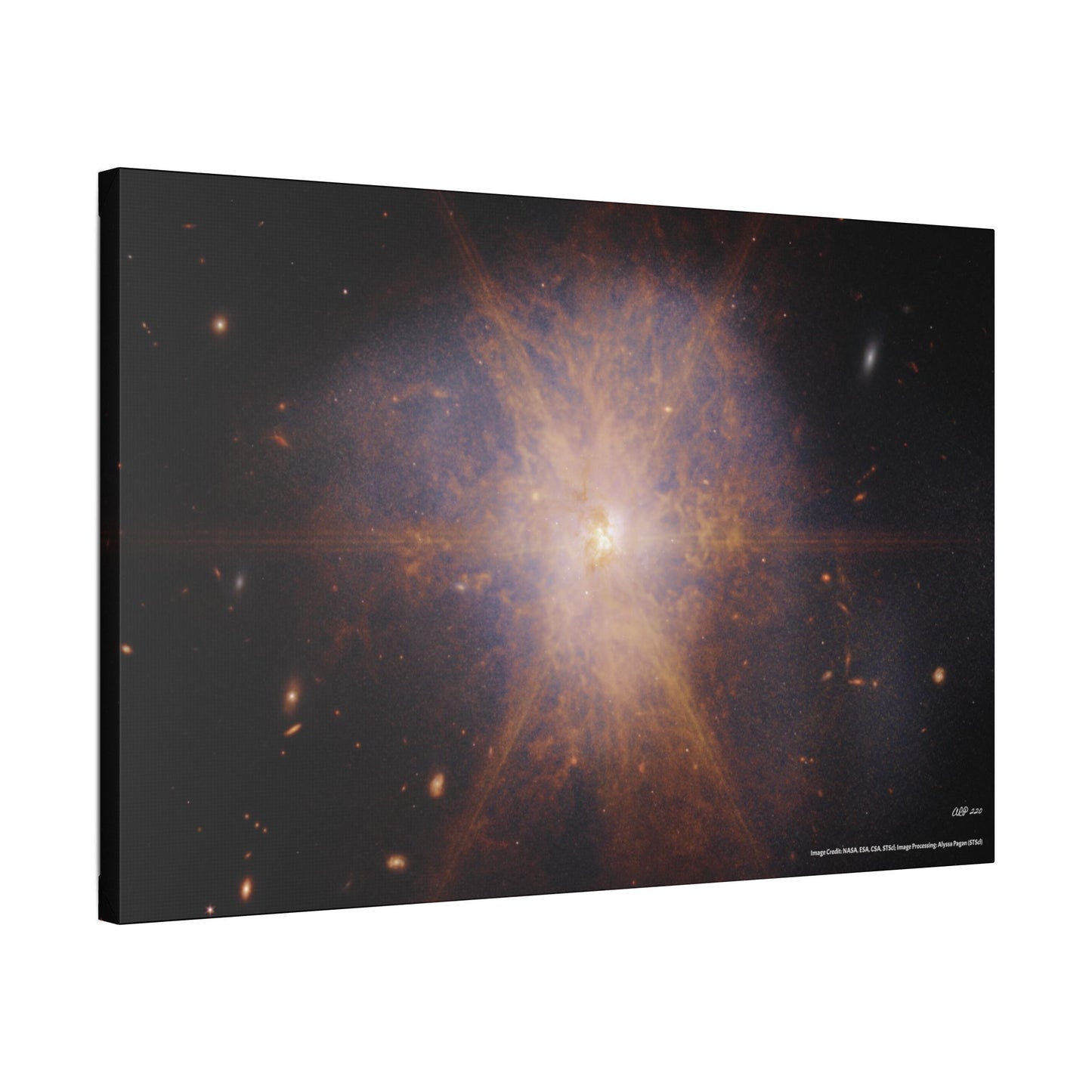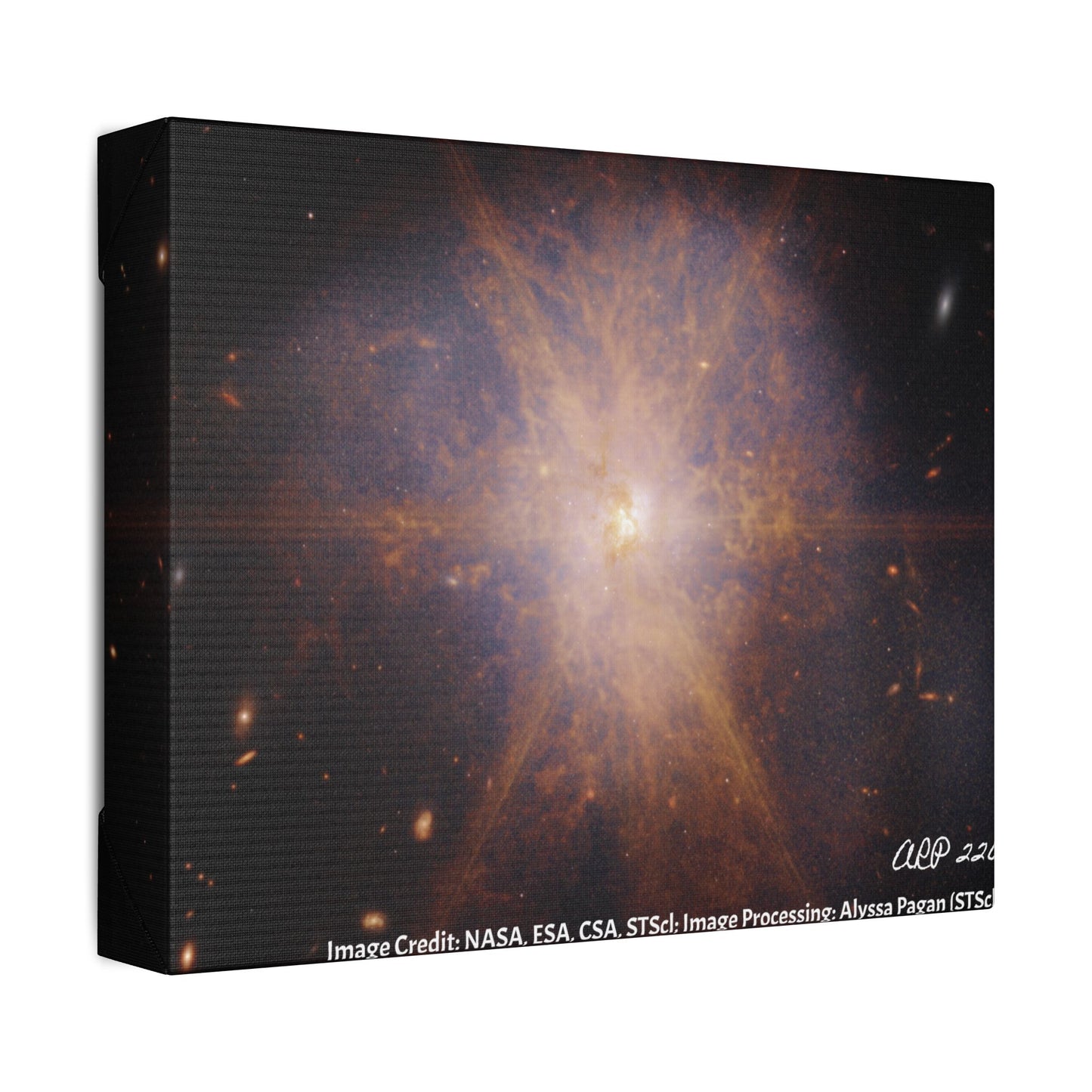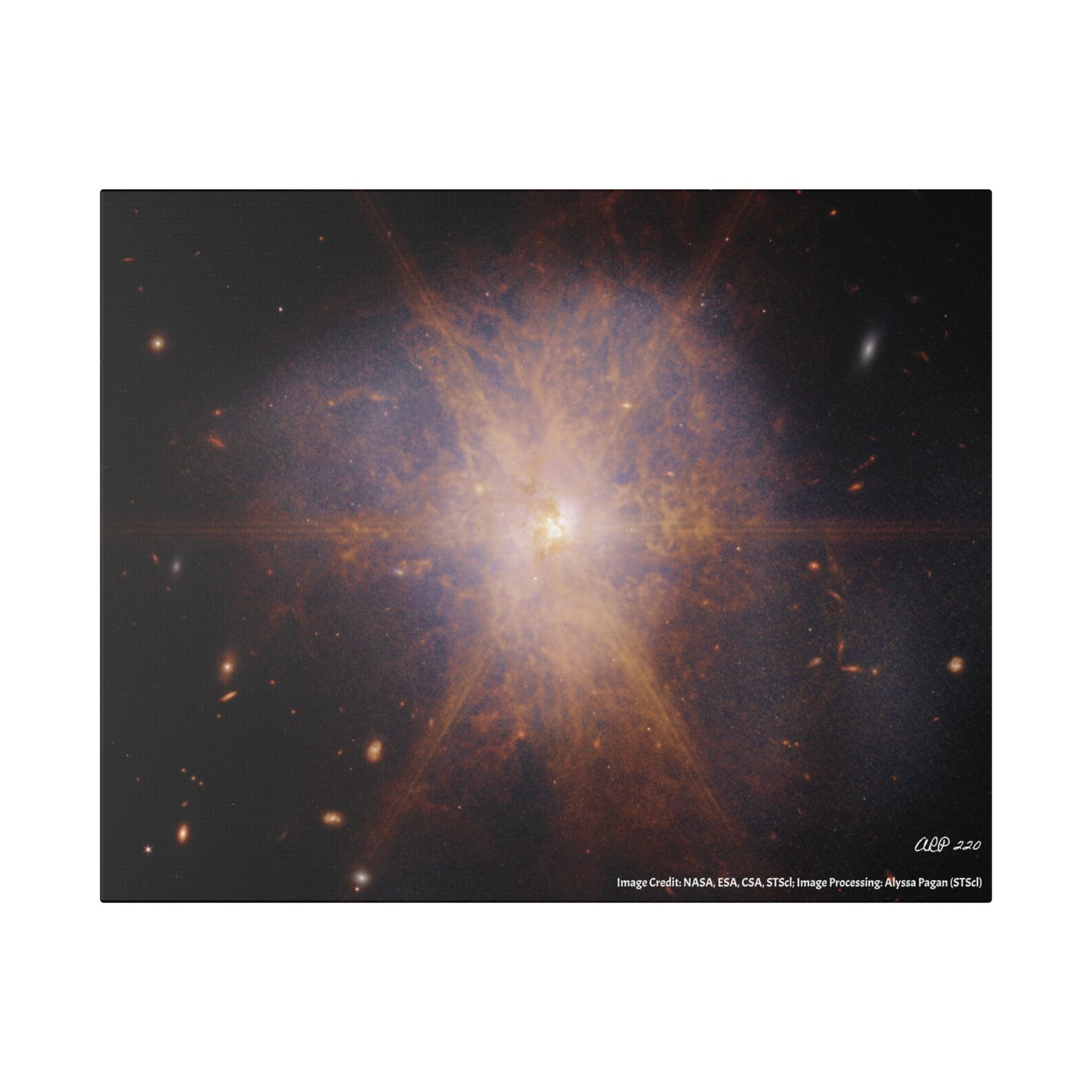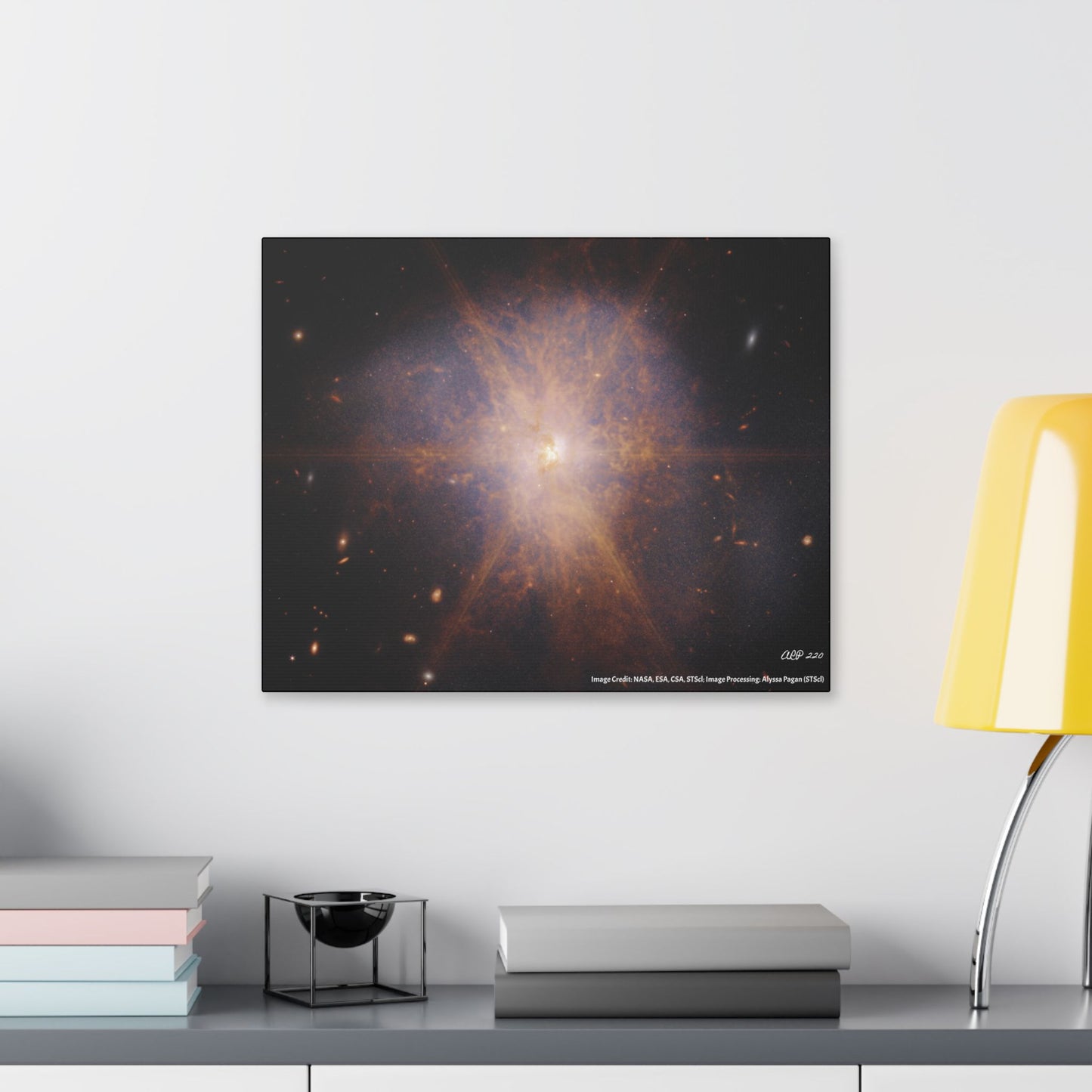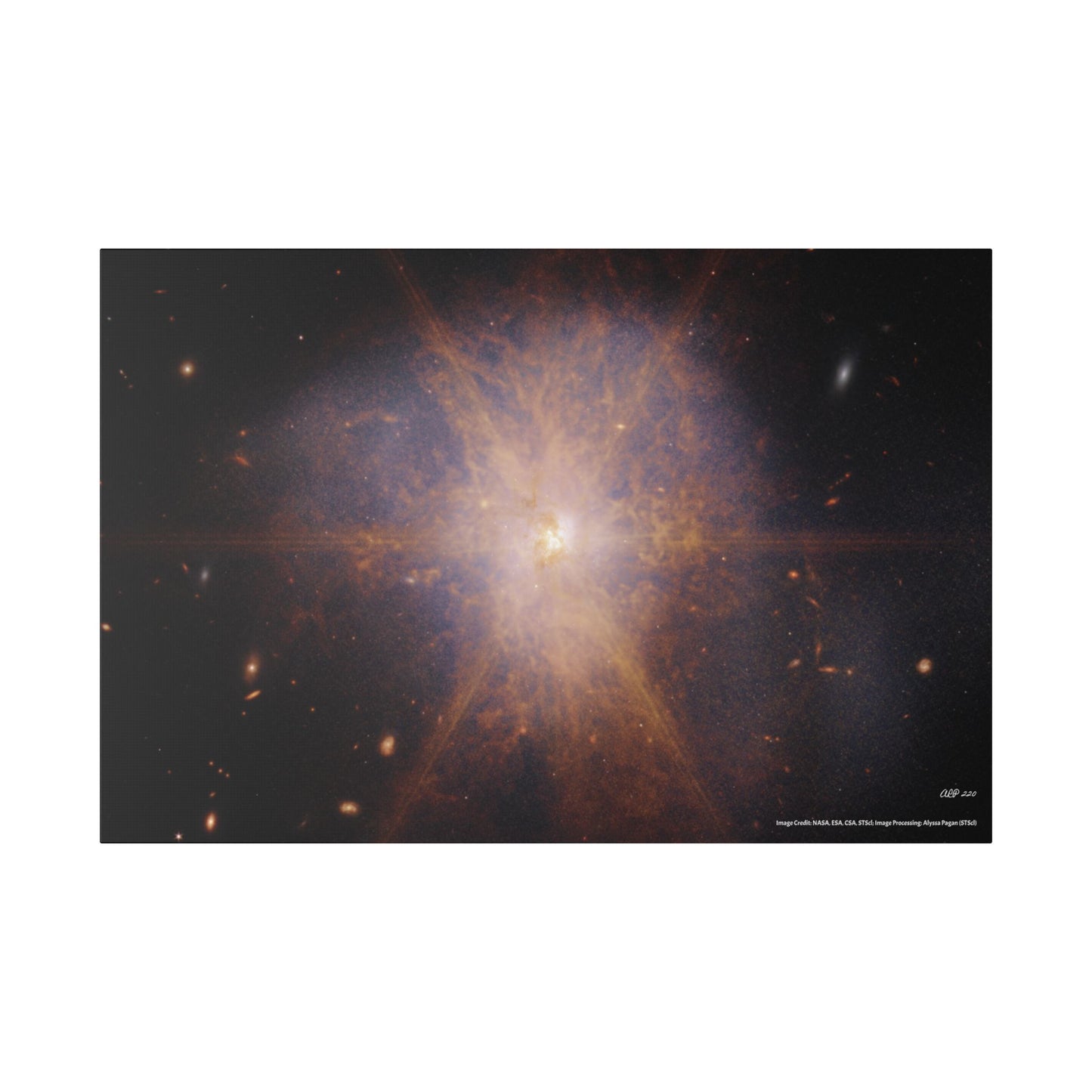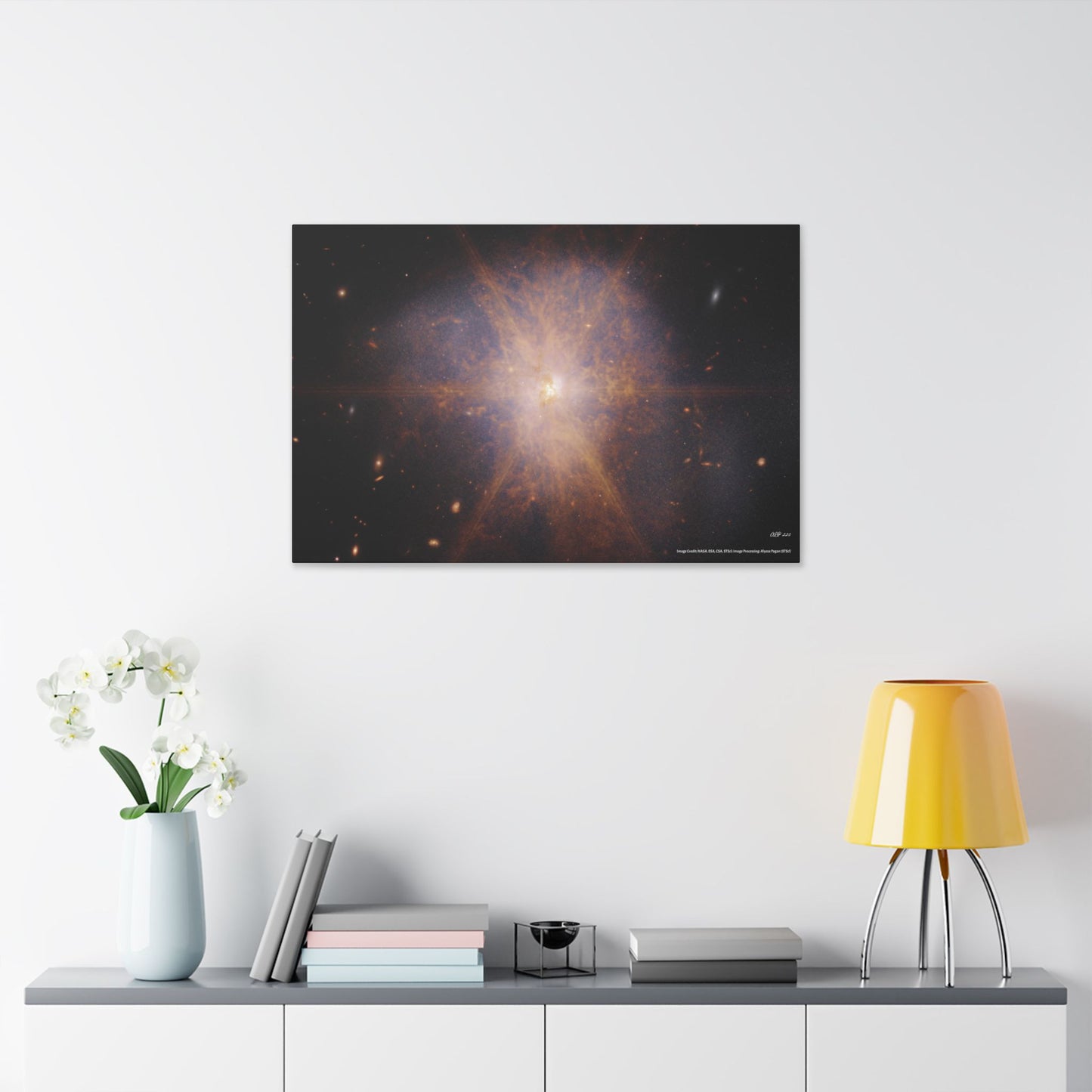ARP 220, Canvas Wall Art
ARP 220, Canvas Wall Art
Couldn't load pickup availability
Elevate Your Space with Quality Canvas Art
Transform your home or office into a sophisticated haven with our stunning collection of canvas art prints. Each piece is meticulously crafted using top-tier materials and cutting-edge printing techniques to deliver exceptional clarity, detail, and vibrancy.
Please note that these canvas art prints are created for exquisite indoor display.
Invest in lasting beauty. Shop for our canvas art collection today.
Arp 220:
Shining like a brilliant beacon amidst a sea of galaxies, Arp 220 lights up the night sky in this view from NASA's James Webb Space Telescope. Actually, two spiral galaxies in the process of merging, Arp 220 glows brightest in infrared light, making it an ideal target for the Webb telescope. It is an ultra-luminous infrared galaxy (ULIRG) with a luminosity of more than a trillion suns. In comparison, our Milky Way galaxy has a much more modest luminosity, approximately equivalent to ten billion suns.
Located 250 million light-years away in the constellation of Serpens, the Serpent, Arp 220 is the 220th object in Halton Arp's Atlas of Peculiar Galaxies. It is the nearest ULIRG and the brightest of the three galactic mergers closest to Earth.
The collision of the two spiral galaxies began about 700 million years ago. It sparked an enormous burst of star formation. About 200 massive star clusters reside in a packed, dusty region about 5,000 light-years across (about 5 percent of the Milky Way's diameter). The amount of gas in this tiny region is equal to all of the gas in the entire Milky Way galaxy.
Previous radio telescope observations revealed about 100 supernova remnants in an area of less than 500 light-years. NASA's Hubble Space Telescope has uncovered the cores of the parent galaxies, which are 1,200 light-years apart. Each of the cores has a rotating, star-forming ring blasting out the dazzling infrared light so apparent in this Webb view. This glaring light creates diffraction spikes — the starburst feature that dominates this image.
On the outskirts of this merger, Webb reveals faint tidal tails, or material drawn off the galaxies by gravity, represented in blue — evidence of the galactic dance that is occurring. Organic material, defined by reddish-orange hues, appears in streams and filaments across Arp 220.
Webb viewed Arp 220 with its Near-Infrared Camera (NIRCam) and Mid-Infrared Instrument (MIRI).
Constellation Serpens
Distance 250 million light-years (100 million parsecs)
Dimensions Image is approximately 120,000 light years across.
Exposure Dates: 2 June 2022, 4 June 2022
Image Credit: NASA, ESA, CSA, STScI; Image Processing: Alyssa Pagan (STScI)
Share
